Photo
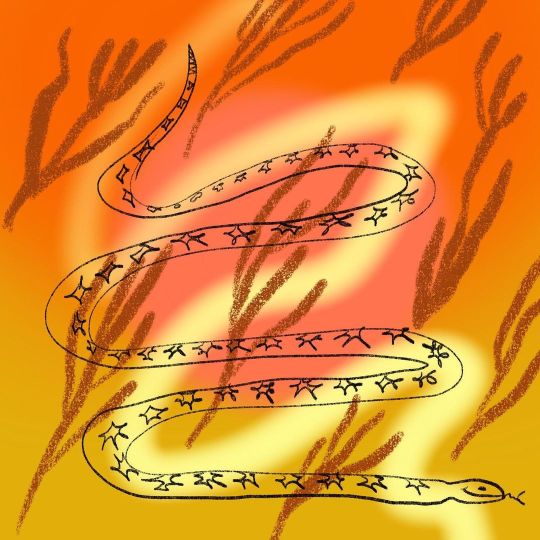
Just what the internet needs: more drawings of snakes, flowers, and people in yoga-adjacent poses https://www.instagram.com/p/CdTZSlgld2ziPosfottkoIkq7D7YO30wFTYBwU0/?igshid=NGJjMDIxMWI=
4 notes
·
View notes
Photo
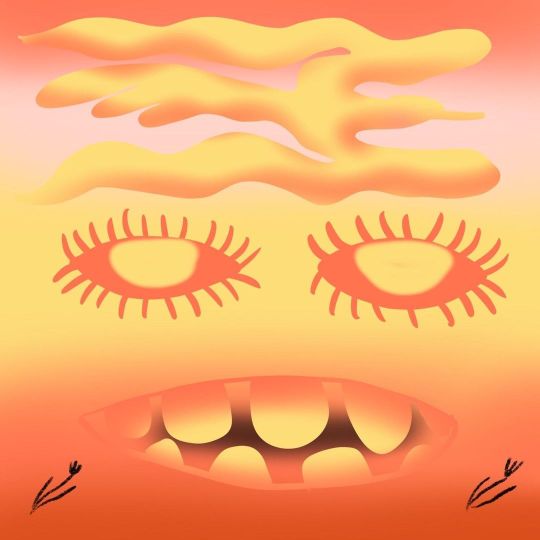
bird watching https://www.instagram.com/p/Cc8mCfsveH8vMF-89Y64z0a0ha7M5NRUw206qg0/?igshid=NGJjMDIxMWI=
0 notes
Photo

i miss the beach https://www.instagram.com/p/CcthvqKvv7yvYLiRPLPNtjNEdP-LlDgEZLNt-c0/?igshid=NGJjMDIxMWI=
0 notes
Photo
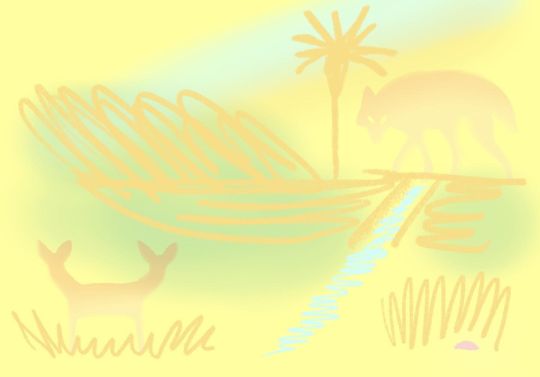
Sights https://www.instagram.com/p/CcWTxizPGfKgrxdKkQHdF30TyexnuuIXKZmC4o0/?igshid=NGJjMDIxMWI=
0 notes
Photo

My attempt at making something NPR might publish.. https://www.instagram.com/p/CcTjgFlvuJUmzA_zTTY87Oj86vVJC9txJhGD5o0/?igshid=NGJjMDIxMWI=
0 notes
Photo

Some more doodles https://www.instagram.com/p/CcOZBkqPzUMAR_aXSOm1B_a-_TiFbHcfCMobCQ0/?igshid=NGJjMDIxMWI=
0 notes
Photo
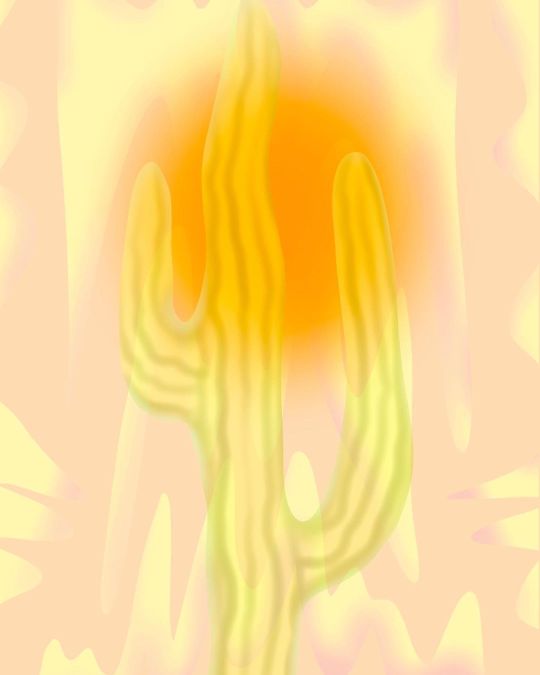
Back in the desert https://www.instagram.com/p/CcHA8EkFtgj0U8nZMilYlfoKWRFezkebO2EEqY0/?igshid=NGJjMDIxMWI=
0 notes
Text





"After John James Audubon (American Woodsman)" 2021.
Vintage posters, Franklinia alatamaha seeds, cotton, antique frame, plywood, plexi, glue, hardware, vintage lumber, iron oxide stain, light-reactive sound device, 1950s sound recordings of Vermivora bachmanii, vintage darning egg, vintage needle and spools, Sturnus vulgaris skull, wool socks knitted by Bobby Wilcox, original wallpaper digitally designed using copyright free historic images, printed by SpoonFlower Inc, self-published zine.
I was invited by Goucher College Curator and Director of Exhibitions Alex Ebstein to create this installation for the "Rediscovering Goucher's Lost Museum" exhibition in fall 2021. Documentation photos generously made by Vivian Marie Doering @vivianmariephoto on Instagram.
Artist Statement:
“On the whole, the task of turning Audubon’s original images into marketable engravings proved to be an extremely labor-intensive process that relied, almost immediately, on the work of dozens of artisans, often working directly under Audubon’s ever-critical eye. But the work process went well beyond the engraver’s shop. Unseen and unheralded others likewise made a critical contribution to the project: the papermakers who produced the huge, high-quality sheets Audubon required; the copper smelters who turned raw ore into clean ingots; the miners who extracted the ore from the earth in the first place; and so forth, back through all the prior steps of production. In that sense, The Birds of America was not just an extensive work of art, not just an example of the sole genius of the lone, struggling artist. It was, rather, an ambitious business venture that relied on a complex labor process and an extensive supply chain, an enterprise in which the artist became not just the designer of the work, but the administrative manager of dozens of people, many of whom could be called artists in their own right, and a marketer to prospective customers, many of whom he had to track down wherever he could find them, on both sides of a very wide ocean.”
--Gregory Nobles, John James Audubon: The Nature of the American Woodsman, 2017. p103
Beyond the ‘supply chain’ of compensated workers existed a backdrop of the truly Unseen and Unheralded – the enslaved Black people whose supportive labor was violently coerced; and the work of Maria Martin, an ‘artist in [her] own right’ whose labor was given, and taken, freely due to her faith and her standing as an unmarried, white woman in the Antebellum South. Utilizing the exquisite Martin-Audubon collaborative painting, "Bachman's Warbler", as a jumping-off point, this installation is a visual exploration of the cultural and structural scaffolding that made such erasure possible during that era, as well as two examples of natural history showcased by the painting that have been lost and found - the now extinct Bachman's Warbler (Vermivora bachmanii) for which this painting and a few short sound recordings are our best documentation of the species' existence, and Franklin Tree (Franklinia alatamaha) a species native to the southeastern US that narrowly avoided utter extinction thanks to the collectors John and William Bartram, and that now exists in scattered cultivation across the country.
This project is not meant as a wholesale ‘cancel’ of John James Audubon or early American naturalists – whose work, at times disturbingly tainted by prevailing beliefs and customs, nevertheless paved the way for the scientific fields of biology and ecology today. This installation is, rather, an acknowledgment of the conflicted entanglements between history, nature, people, race, gender, ideology, belief, imagery, and power.
Collections are essentially a grandiose form of appropriation, recontextualizing objects for myriad purposes. This installation plays with two traditions: collections and appropriation, by appropriating and recontextualizing Audubon’s work, as well as other historical illustrations from various collections, and using metaphor and allegory as tools to tell the story. It would not have been made possible without the help, labor, and/or support of many unseen and unheralded, including the anonymous archivists at the Internet Archive, New York Public Library Digital Collections, and Cornell’s Macaulay Library, collectors on Ebay, Etsy, Facebook Marketplace, and Bazaar in Hamden, the production team at Spoonflower, and most especially Alex Ebstein, Bobby Wilcox, Seth Adelsberger, Denise Wilcox, Patti Murphy, Wyatt Hersey, Jenny Rieke and Oona McKay.
3 notes
·
View notes
Photo
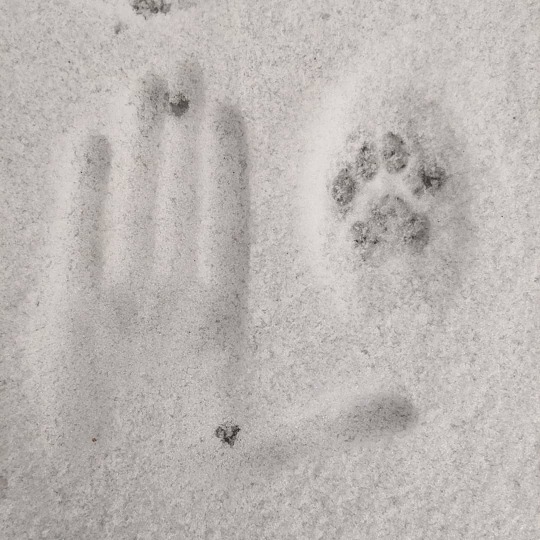
Fwends? https://www.instagram.com/p/CJpJAqaFxrA--Lg1iy-zG9NSLaX5wyyN3nNqQY0/?igshid=NGJjMDIxMWI=
0 notes
Photo

Thx @tidytype 💙💙💙 https://www.instagram.com/p/CI3d_qflvfZNVkvNX11PSgQymO-gQJ8GA7YJdg0/?igshid=NGJjMDIxMWI=
0 notes
Photo

I had a great time participating in this month's @uistanleymuseum First Fridays pop-up art exhibit, alongside other local artists who also turn to art-making as a way of navigating our wacky political times! Thanks to Vero Smith and the Stanley for organizing this inclusive event, and to everyone who came out! A little background for my flag: As Americans, we hold certain values--such as freedom, individuality and equality--so strongly, we consider them to be universal. If this is the case, how have we arrived at such a vehemently divisive time? Do we all agree what freedom means? And for whom? The American Flag is an instantly recognizable symbol of these ideals. But do we all see the same flag? The original Star-Spangled Banner was created with cotton and wool fabric dyed in England using traditional techniques and dye plants. Indigo (Indigofera tinctora) was used for the blue Union and madder (Rubia tinctorum) was used for the red stripes. Madder was prized as a dye plant for millenia, and has the peculiar characteristic of producing a wide range of colors depending on mordant and modifying baths used before and after the dye bath. A mordant of alum and an acid modifier produces bright coral pinks and oranges, while an iron mordant and basic modifier produces moody purples. The brightest reds were produced by a laborious process that included sheep dung, and was kept secret by Turkish dyers for centuries. I taught myself traditional dyeing techniques by preparing each stripe with a different mordant before, and treating them with different modifiers after, simmering them all in the same madder dye bath. The process produced a surprising variety of hues from the same dye. By including this variety in my re-envisioning of the iconic American flag, the dyeing process becomes a metaphor for the ways our individual up-bringings and experiences tint our understanding of these values, producing a baffling variety of expressions and opinions about what freedom, individuality and equality mean. I chose to work with USA-made cotton to remind viewers of the troubled provenance of our country’s wealth and global influence which make those values possible today. (at FilmScene) https://www.instagram.com/p/B8UkO96lxGDV1Co62V91bQYCwt1O9AmUanIbMg0/?igshid=NGJjMDIxMWI=
0 notes
Photo

Happy Solstice, y'all https://www.instagram.com/p/Brqn1lKF7mdF92o_gRPb9l9LDRpVacyMctkQqY0/?igshid=NGJjMDIxMWI=
0 notes
Text
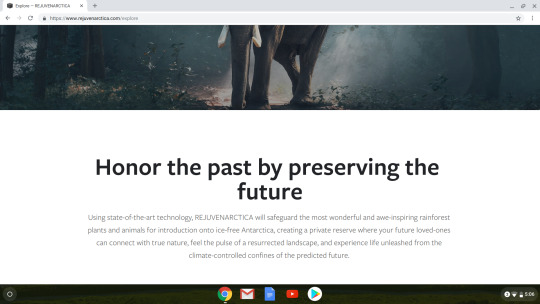







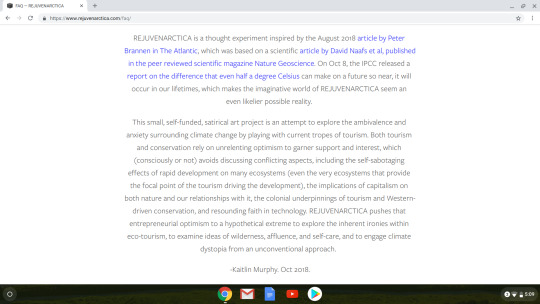

Θ
REJUVENARCTICA is a thought experiment inspired by the August 2018 article by Peter Brannen in The Atlantic, which was based on a scientific article by David Naafs et al, published in the peer reviewed scientific magazine Nature Geoscience. On Oct 8, the IPCC released a report on the difference that even half a degree Celsius can make on a future so near, it will occur in our lifetimes, which makes the imaginative world of REJUVENARCTICA seem an even likelier possible reality.
This small, self-funded, satirical art project is an attempt to explore the ambivalence and anxiety surrounding climate change by playing with current tropes of tourism. Both tourism and conservation rely on unrelenting optimism to garner support and interest, which (consciously or not) avoids discussing conflicting aspects, including the self-sabotaging effects of rapid development on many ecosystems (even the very ecosystems that provide the focal point of the tourism driving the development), the implications of capitalism on both nature and our relationships with it, the colonial underpinnings of tourism and Western- driven conservation, and resounding faith in technology. REJUVENARCTICA pushes that entrepreneurial optimism to a hypothesical extreme to explore the inherent ironies within eco-tourism, to examine ideas of wilderness, affluence, and self-care, and to engage climate dystopia from an unconventional approach.
-Kaitlin Murphy. Oct 2018.
This post is a continuation from the previous post, which features more screenshots of the website as well as an "advertisement" that I hand-painted and hung in the storefront of the Metro Gallery in Baltimore, MD, as part of a rotating gallery project by my good friend and curator, Alex Ebstein.
0 notes
Photo
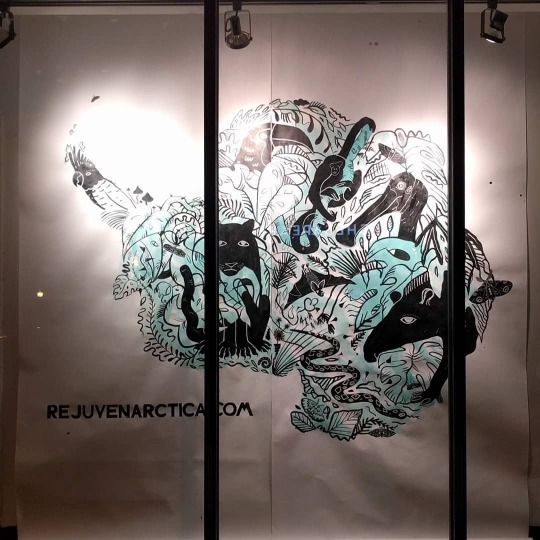



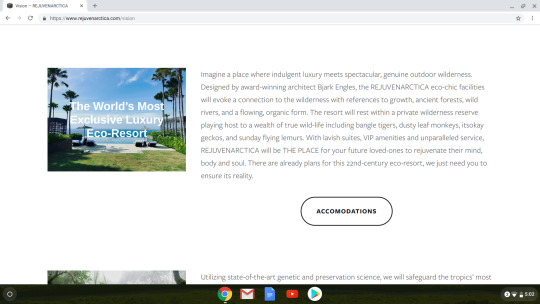




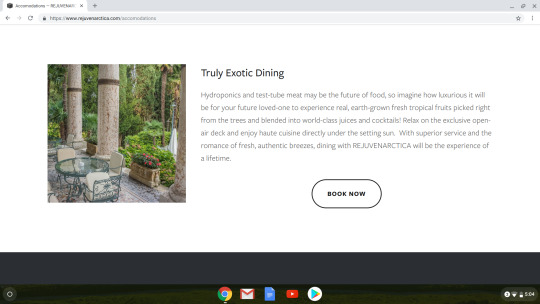
Screenshots of a fake venture capitalist investment website I made to explore the terrifying predictions, greenwashing, and the absurd lack of urgency in political discourse on climate change.
0 notes


